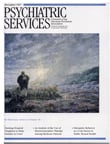One of the primary stated goals of these edited volumes, with chapters contributed by one or more clinicians, is to offer guidelines of practical value to professionals working with preschool and school-aged children. The intended audience is master's-level and doctoral-level clinicians who are described as frontline providers of child mental health services. Another purpose is to provide state-of-the-art instruction in treatment techniques for commonly encountered clinical conditions.
Chapters in Treating Preschool Children range from developmental and behavioral principles guiding work with children from birth through five years of age to specific problems, including autistic-spectrum disorders, gender issues, attachment disorders, feeding disorders, elimination disorders, child abuse, and common sleep disturbances. We assume that the editors chose to focus on categories described within the DSM-IV nosology of childhood psychiatric disorders, but in doing so they have omitted many of the problems most commonly seen in this age group—namely, behavioral aggression, extreme emotional outbursts, social withdrawal or shyness, high activity level, oppositionality, and defiance.
The book does a nice job of providing introductory overviews of the problem areas mentioned above. We found the chapters on sleep disturbances and elimination disorders to be especially comprehensive and pragmatic. Some chapters, such as the one focused on disorders of attachment, spend much time on the theoretical and diagnostic issues and too little on approaches to treatment. Other chapters suffer from space limitations for providing more in-depth treatment of their broad topic areas, such as child abuse. We particularly appreciated the authors' delicate treatment of gender issues, an area fraught with controversy in real-life clinical practice.
Written in a similar format, Treating School-Age Children addresses some of the syndromes most frequently encountered in middle childhood, including anxiety disorders, depression, and eating disorders. An introductory chapter defines the major developmental tasks inherent in this age group and then reviews the recommended process of assessment. As in many of the chapters, the review of assessment techniques is rather brief and includes only some of the more commonly employed strategies and tools. However, it gives the beginning clinician a basic model for understanding how development affects the assessment process as well as practical suggestions for conducting an assessment.
Each subsequent chapter addresses particular clinical syndromes or problems and provides case examples to further elucidate assessment and treatment. Also included in each chapter is a brief discussion of the impact of managed care on the treatment process, which is certainly relevant to today's clinician. The sections on anxiety and pain management provide thorough descriptions of various treatment strategies in a straightforward manner while limiting discussion of the theoretical basis for the techniques.
The chapter on eating disorders provides valuable information on risk factors and prevention in addition to treatment for these challenging problems. Although techniques such as play and family therapy, as well as more traditional behavioral strategies such as exposure therapy and relaxation training, are mentioned in many of the chapters, the authors offer few practical instructions or recommendations about these approaches that would prove useful to the beginning or advanced clinician. Although space limitations likely played a role, further discussion might have been useful.
In summary, both Treating Preschool Children and Treating School-Age Children offer a rather rudimentary introduction to some of the major disorder categories for children in these age groups but manage to exclude some of the most relevant problem areas often encountered in the field. In addition, assessment and treatment techniques are only briefly described, making the understanding and implementation of these techniques challenging to many clinicians. We believe that these books, contrary to the editor's intentions, would be most useful to the beginning clinician or to students in advanced undergraduate or graduate training settings.

